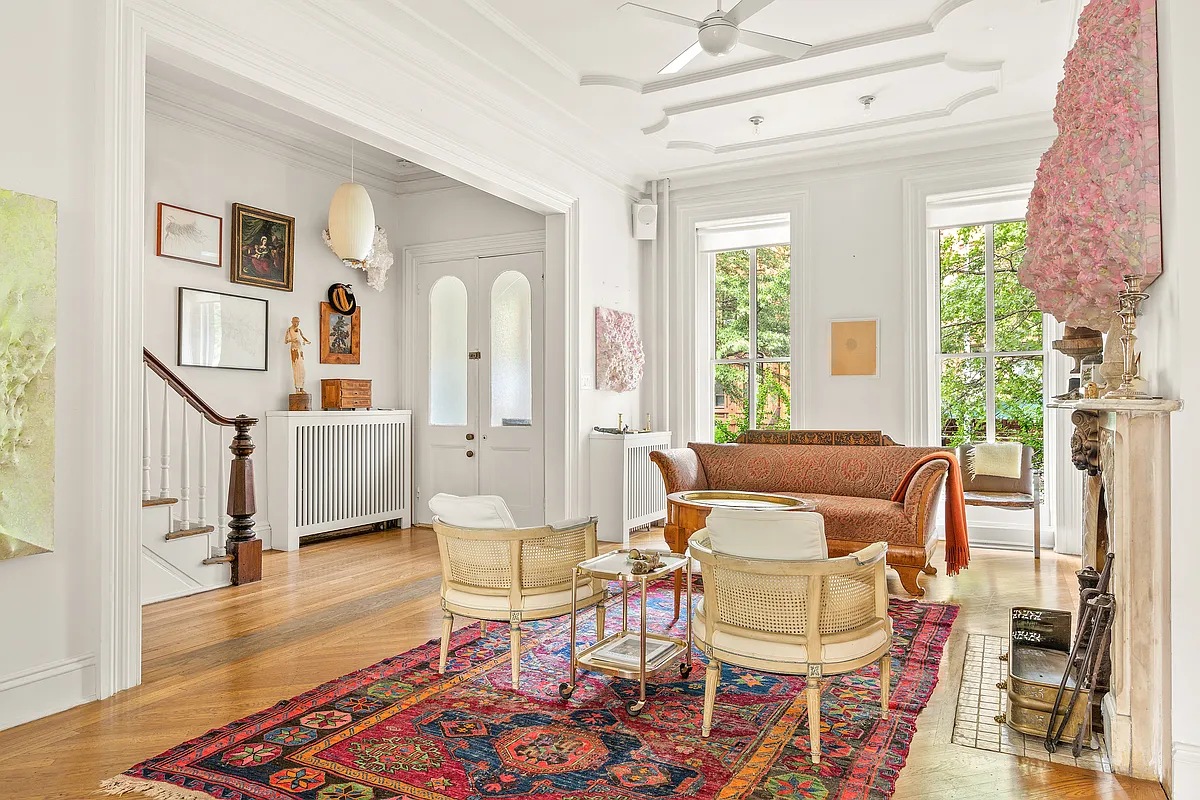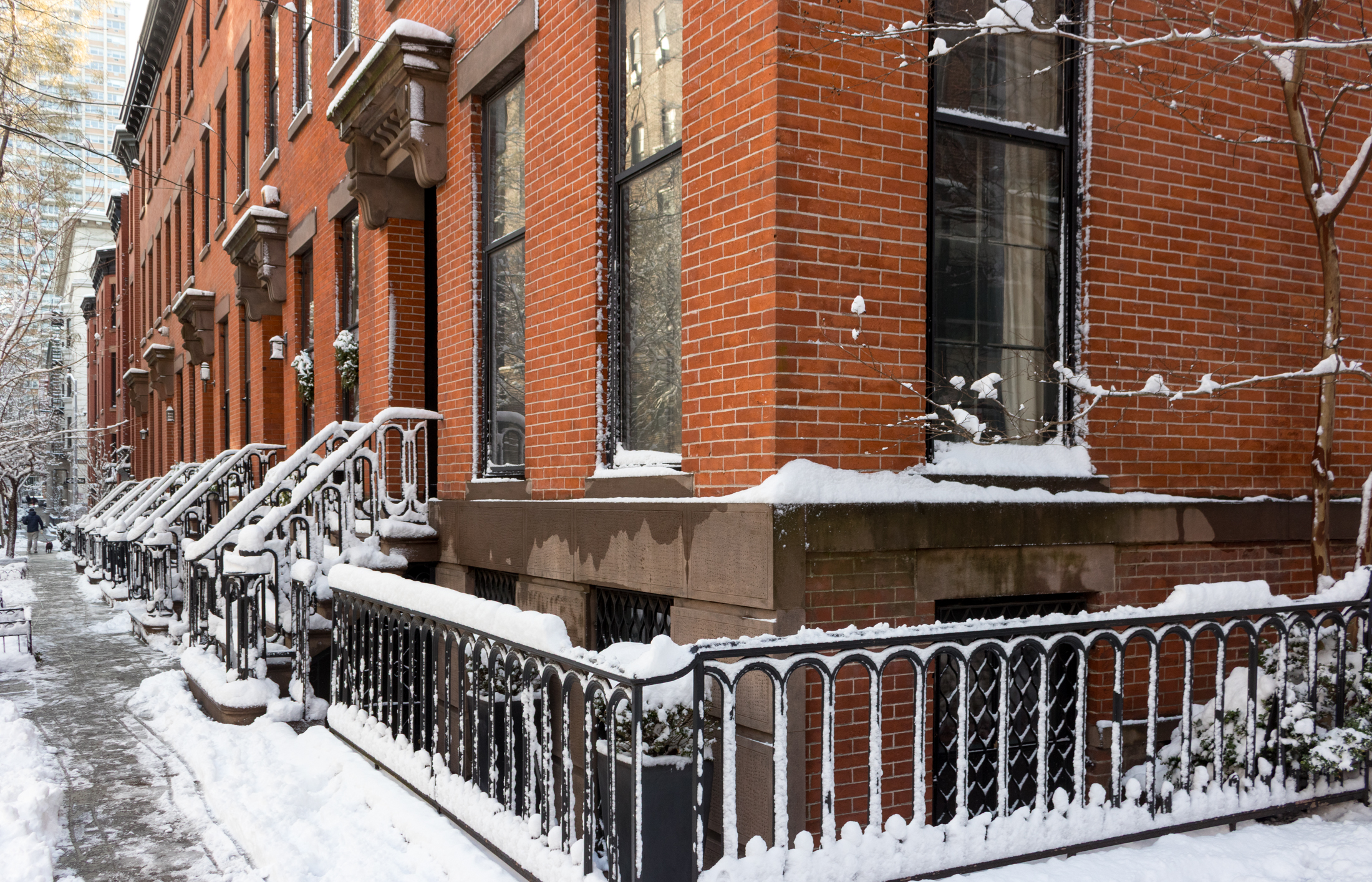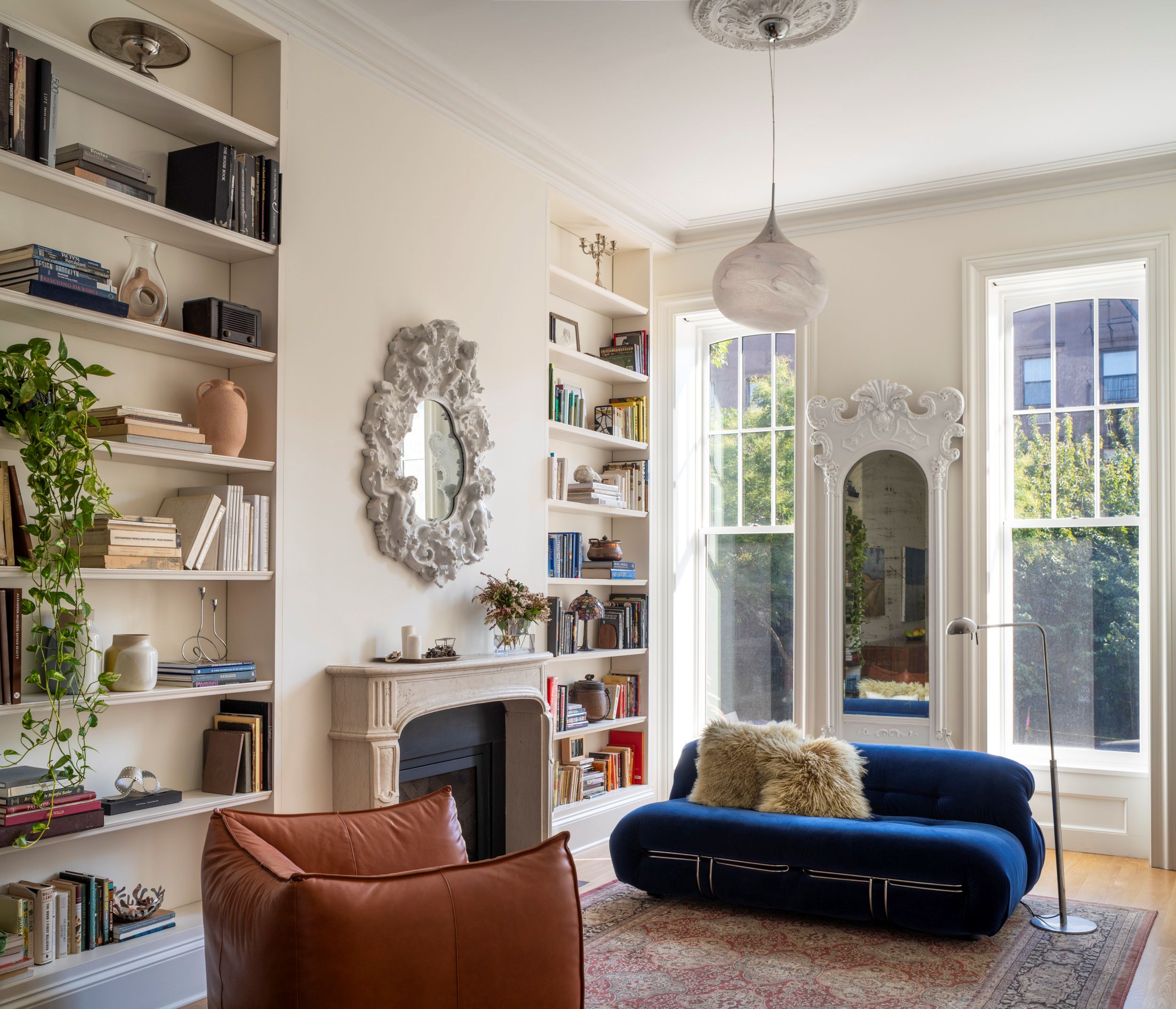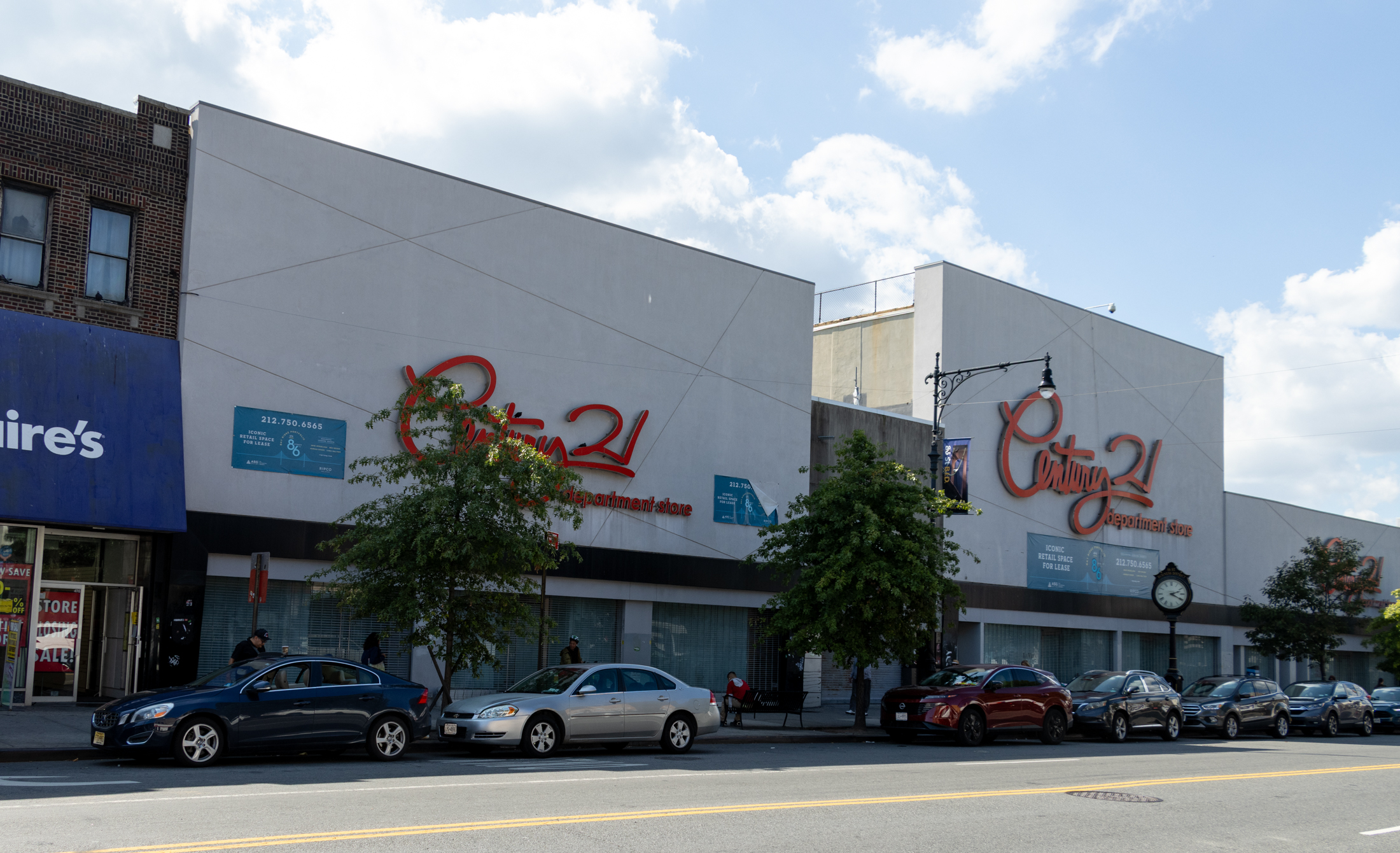Walkabout with Montrose: Tenement Living
This is the second in a series of pieces about the development of multiple-unit housing in Brooklyn. Starting at the bottom of the economic ladder and moving up tenements. There have been tenement buildings in NY since the beginning of the city. The poor and lower working classes have long been sheltered, if you could…


This is the second in a series of pieces about the development of multiple-unit housing in Brooklyn. Starting at the bottom of the economic ladder and moving up tenements.
There have been tenement buildings in NY since the beginning of the city. The poor and lower working classes have long been sheltered, if you could call it that, in cramped and wretched rooms by the docks, slaughterhouses, and factories, and in areas allowed to go to seed by unscrupulous landlords and city officials.
With immigration rising, beginning in the mid 19th century, the population of the Manhattan and Brooklyn continued to grow by leaps and bounds. In 1867, the first of three Tenement House Laws was passed in an attempt to improve conditions, which almost everyone agreed were horrible and inhumane.

Legally, a tenement was defined as any building with 3 or more units, with shared sanitary facilities. This 1867 law only required that a legal tenement had a fire escape and at least one privy for every 20 tenants. This privy was outside, in the back of the building, and the law also forbade the keeping of sheep, goats, horses and cows on the premises.
Most of these tenement buildings had 2 or 3 room units, and had received little light or air. Many of them were 3 and 4 story wooden buildings which deteriorated quickly, and were prone to catch fire. Real reform was still to come.
In 1879, an important new tenement house law was passed, which is referred to as the Old Law. It mandated that new tenement buildings be built to allow natural light and air in every room. The “dumbbell” apartment was invented, with wider rooms in the front and back and narrow centers to allow air shafts to be built in the center to let in necessary light and ventilation.
The lowest income adjoining tenements shared a single rear yard privy, and water was only available in the rear yard. Higher end tenements typically had 4 units per floor, with indoor toilets in the center of each floor, along with the stairwell.
Most higher end units had three rooms, with a living room in the front or rear, and bedrooms open to the air shafts, each successive room being reached by passing through another room. The living room contained a tub and cold water, and a chimney or flue for a coal stove for heating and cooking.

Many of these buildings had four residential floors rising above retail stores on the ground floor, and were often on mixed commercial blocks. Corner buildings, with two street frontages were exempt from the dumbbell configuration, and were often larger than midblock tenements.
By this time, the preferred building materials were brick and stone, not wood, but in spite of the changes, tenements were still crowded and miserable places to live. In 1929, the Multiple Dwelling Law mandated that all tenements be upgraded to replace outdoor privies with one indoor water closet for every two families, and fire safety standards, such as sprinklers and better fire escapes were implemented.
In Brooklyn, we can still find the remnants of the Old Law tenements in the oldest neighborhoods like Brooklyn Heights, Cobble Hill, Williamsburg, Bushwick, and parts of Bed Stuy.

Many of us may have been in one of these apartments that still has the tub in the living room, tiny kitchen against a wall, and a toilet that seem like an afterthought tucked into a closet. It was. Ironically, many of these buildings do not look like our idea of tenements from the outside.
The Victorians believed in exterior ornament, whether on a factory, tenement or private house. These buildings can have expressive cornices, framed windows with ledges and pediments, and fine entry doors. Most are brick, all are walk-ups, and they range in styles from early Neo-Grec, to Romanesque and Renaissance Revival.
The best, and most judiciously thought out tenements are the workers’ housing built by Alfred Tredway White, designed by Wm Field and Son, from 1876 1890. The Tower Building, Home Buildings, and Workingman’s Cottages are found on Warren, Baltic and Columbia Place, in Cobble Hill, while his Riverside Apartments, by the same architects, are in Bklyn Hts, on Columbia Place and Joralemon, part of which was lopped off in the building of the BQE.

All of White’s tenement buildings share the same basic design, are quite beautiful, and allow light and air in through windows and air shafts. The balconies and exterior hallways prevent the foul enclosed hallways of other tenements, as well providing architectural interest.
Storefronts line the street level on Columbia Place. He also provided a large courtyard in each development with a fountain, play area for children, and concert space. In spite of this, the apartments are still extremely small, especially for families.
They also had indoor toilets in each unit, although, originally, common bathing facilities were located in the basements, and were available for an extra fee.

A similar effort in decent worker’s housing was built by Brooklyn’s richest man, Charles Pratt, in 1885-86. The Astral Apartments, for Pratt’s Astral Oil Company workers, span a complete block of Franklin, Java and India Streets in Greenpoint.
They were designed by Lamb and Rich, who also designed most of Pratt Institute. 95 families originally lived here, and because Pratt was not trying to make a profit, he added some amenities White did not.
Each apartment had a toilet and a bathtub with hot and cold running water, and a dumbwaiter to the cellar was provided for trash removal. Like the White buildings, the Astral was well ventilated, and also had stores on the ground floor, and a large courtyard in the rear.

In spite of these two philanthropic projects, the majority of the tenements in Brooklyn were still beyond awful. During the Depression, the WPA tore down many of the deteriorating wood frame tenements. Very few remain today, and beginning in the 1950’s, modern housing projects removed many more tenement blocks.
My Flickr page has some historic photographs of the buildings and those who lived in them, as well photos of some of these buildings today.
Since tenements were designed to house the workers who made the city run – the day laborers, servants, clerks and factory workers, coachmen, carpenters and dressmakers, they are often found on streets now highly desirable for the restaurants, stores and establishments that are now found on many of their commercial ground floors. Many former tenement buildings have now been reconfigured as desirable coops, condos and rentals.
Next in the series: Most late 19th century middle class apartments are not classified as tenements; they are flats, French flats to be exact. So what’s the difference?





I happened to go to the Tenement Museum for the first time last weekend. Indeed, there was no plumbing at all in the tenements built in the 1860s or so. In that particular building, a laundry tub with a cold tap was added to each kitchen and a toilet was put into the hallway around the turn of the century. Sometime later, maybe in the 1920s, the building added hot and cold running water in a wall-hung sink in the kitchen next to the laundry tub. The apartments never had tubs or showers. Families of seven slept in three rooms, some of them on crates, couches, chairs, or combinations thereof.
Now the funny thing is, immigrants are still living in similar conditions now, though fortunately the plumbing has improved, though it’s still inadequate and these places are still firetraps. In Bushwick, for example, it’s common for 12 unmarried people, including mothers with children, to share one bathroom and kitchen on one floor with four or five rooms for sleeping. Also for families with three adults (a sibling plus a married couple) to split similar apartments. I’m sure conditions are similar in Sunset Park, Bay Ridge, parts of the Bronx, etc.
One apartment I saw was particularly well kept, with a fold-up wooden bed frame for the parents tucked up against a wall during the day in the living/dining/kitchen, bunk beds for the boys in one room, and two beds for the girls in the front room. An additional tiny room was being used as a walk-in closet.
BTW, you might enjoy this story about tenement life and Ellen Eddy Shaw, the founder of the Brooklyn Botanic Garden’s Children’s Garden: http://www.bbg.org/edu/children/cg_history.html
I never met Ms. Shaw, but I knew her successor Ms. Frances M. Miner—another remarkable woman.
Thank you, MM. Thank you, Vinca. To both of you, thanks. . . as usual.
benson- that was an amazing story. My grandmother and my mother and her twin sister came over by boat to join my grandfather. My grandmother spoke broken English years later but then none. My grandfather died 6 months after they arrived so the other 2 girls were left in Russia. One was wiped out with her family by the Germans, the other came after she was grown up.
My mother talked about growing up- not about the hardships really, but about the people they loved, the good things that happened. Making sure my Aunt got her high school diploma, while my mom went to work.
My father’s family was a bit wilder, although I don’t know very much about them. Lots of kids and my father went to work at 10 years old to help support them.
Jacob Riis did amazing work. My mother grew up in Hell’s Kitchen. My father’s family moved around- but always into another tenement. My father grew up hating anything old (except people)- furniture, houses, dishes…. everything had to be new and modern. To the best of my knowledge tenements were a mix of Jewish, Italian and Irish in most neighborhoods. A wonderful book is East River by Sholem Asch- it captures the flavor of tenement NYC, and it is rich and teeming with life.
Montrose:
The historic photo at the top of your post is a great one!
Who were these people? What became of them? How did they see themselves in Brooklyn of the time?
Housing is, above everything else, about people, the vast majority of them anonymous.
Were the ones in these tenements told they were to depict life in a “slum” (as noted on the photograph)? Or did the photographer merely ask them to pose? Blowing up the image, it’s possible to see a woman bent over her child giving what appears to be the smile of a proud mother.
There are families and individuals here, not slum “types.”
Taking Kenneth Jackson’s History of New York City course at Columbia many years ago, I learned that around 1900 75-percent of the city lived in tenements because most people were poor, the Lower East Side had a population density the same as Calcutta, the city’s murder rate was over 700 people year (with today’s much larger population, the equivalent of 2,300), the jails were filled with immigrants and their children (approximately one third of them Jewish, which correlated with ethnic poverty rates at the time), and there were 50,000 homeless children roaming the streets.
Park Slope, Clinton Hill, Brooklyn Heights, etc. represent only a small piece of the city back in the day.
What did the people pictured above think of Brownstone Brooklyn, if they thought of it at all?
Nostalgic on Park Avenue
Gemini;
I can WELL relate to your story about your mom’s expression. My parents would say the same thing.
The funny thing is that I’m the same way. I live in a 46 unit condo development which has balconies facing a court yard. I and another resident are always railing against the lax policies regarding the balconies. Wouldn’t you know: I and this other resident are “white-ethnic” NY’ers from the old immigrant stock.
THL;
Yes, I must say that my grandmother was a remarkable, saintly woman. Not only did she face this hardship, but she came here in remarkable circumstances. Her mother died when she was about 13. Her father remarried, and her step-mother had no use for her. When she was 16, she was packed off on a ship to NY, all by herself. When I think of her situation, I never complain about any problems that come my way.
it is called a mezuzah , Rob. not a latch.
I have to say that I’m having a bit of a hard time with this post and most comments. I lived in a Chinatown/Little Italy tenement for many years during the 1970s-80s. (Born in Brooklyn much earlier, returned to Brooklyn mid-80s.) Our apartment had a tub in the kitchen and toilet in the hall. That meant you had to leave your apartment to use the toilet. That also meant that during the winter, when you’d live for months on end without heat and hot water, the toilet would freeze, and you’d use a bucket. The tenants on our block and in our building were mostly a mix of Italian, Dominican and Chinese. The gentrifying newcomers were referred to (kindly) as “young Americans.â€
Reading these comments reminds me somewhat of the tourists during the San Gennaro festival: the crowds of gawkers who’d point with mock horror and ask
“do people really live here?†and whose only tenement “experience†is through museum exhibits. The apartments with showers in the kitchens are ones where tenants themselves made “upgradesâ€â€”swapping out clawfoot tubs for showers and adding a few precious square feet of living space. All these apartments originally had only cold-running water. As late as the 80s and beyond, due to real slumlords (not the epithet thrown around so casually on Brownstoner), you had to put a giant pot of water up to boil at night, and wake up to water cascading down every wall where the steam condensed. Many of the older, currently-reviled/envied RC/RS tenants still live in these conditions, though 311 has made it a little easier to get relief.
MM, thanks for the post. Sorry that there was no mention of Jacob Riis, whose activism, photojournalism and seminal book, “How the Other Half Lives,†did so much to target the owners and expose the misery of tenement life. I hope you can refer to him in the second of your series.